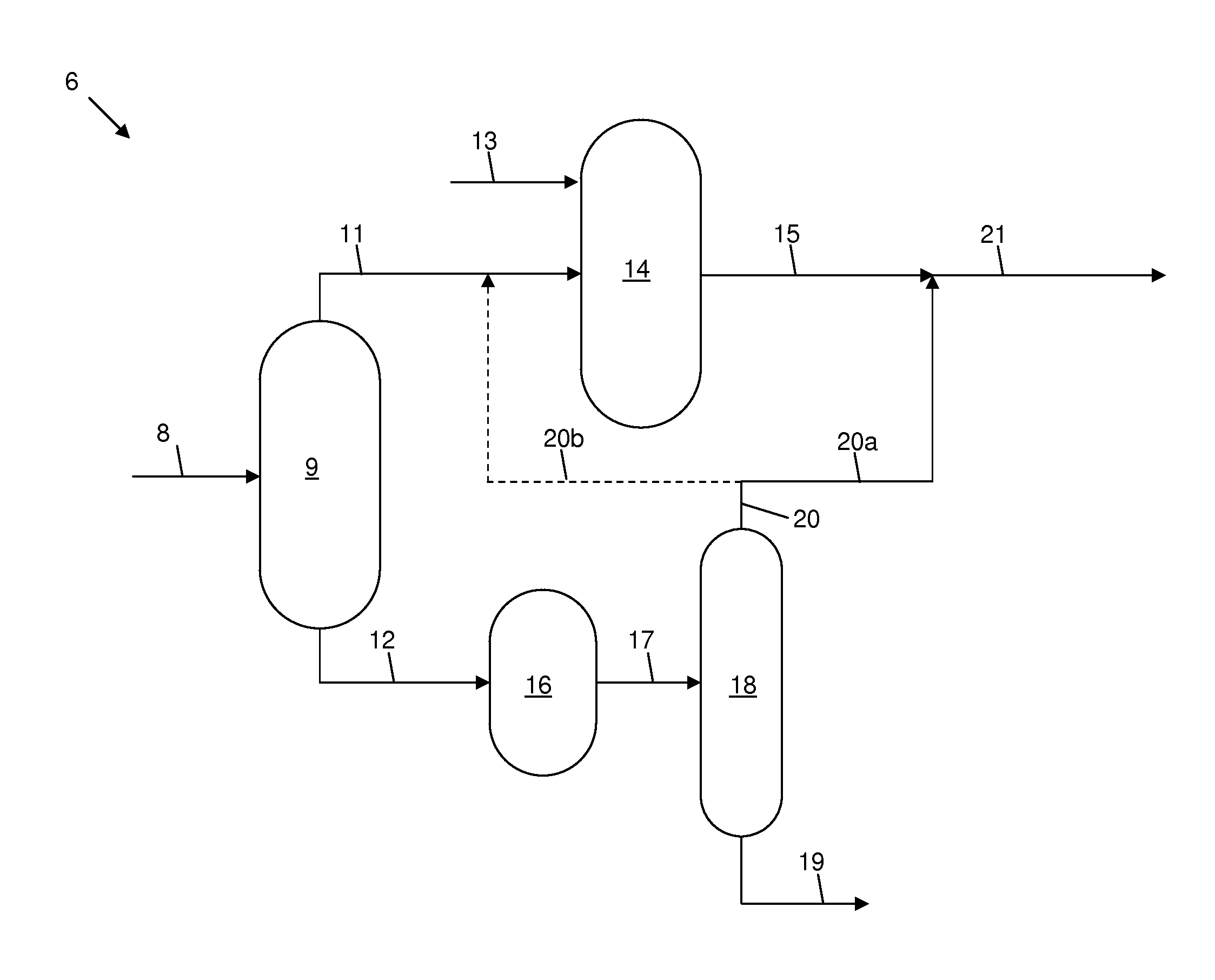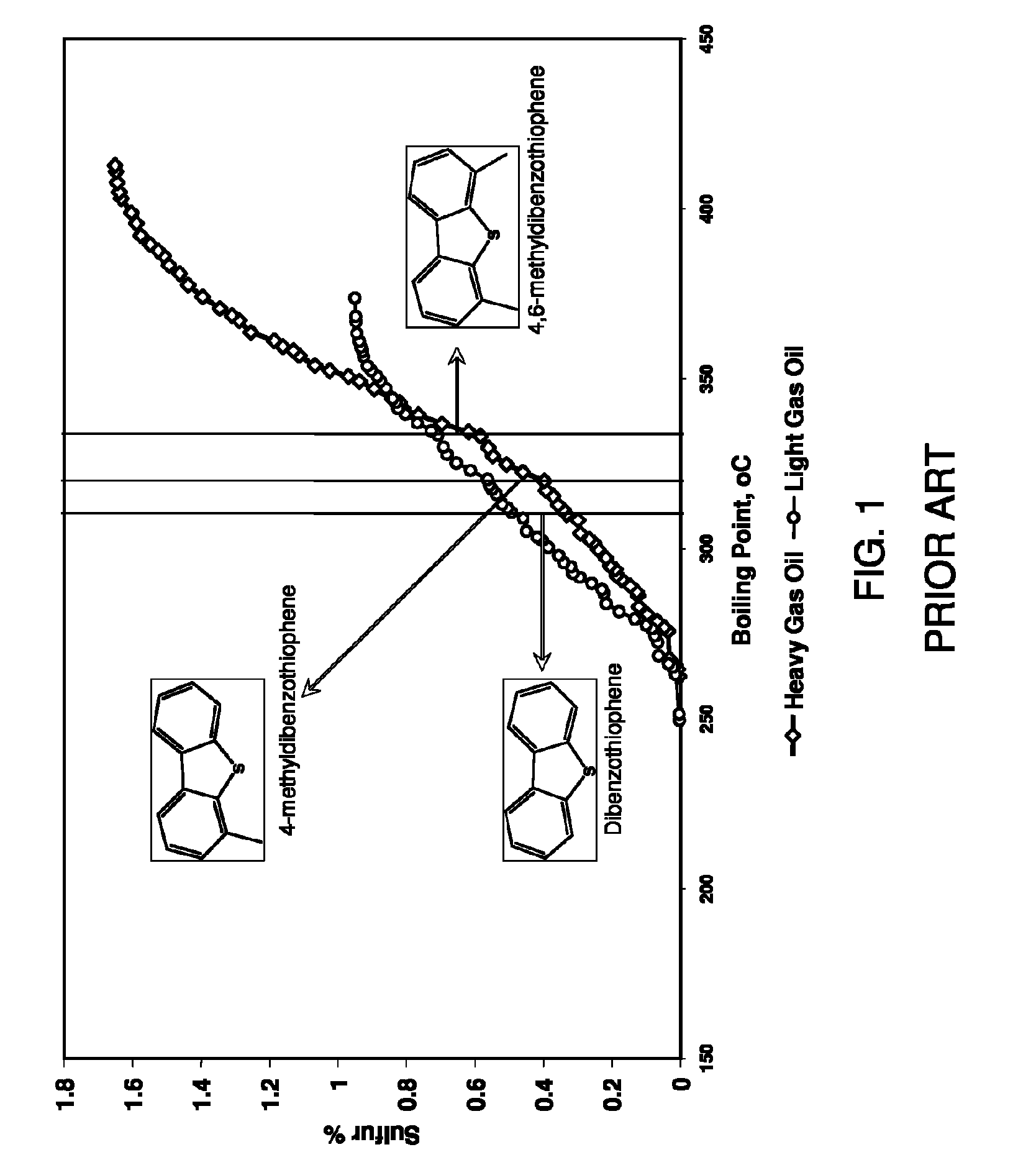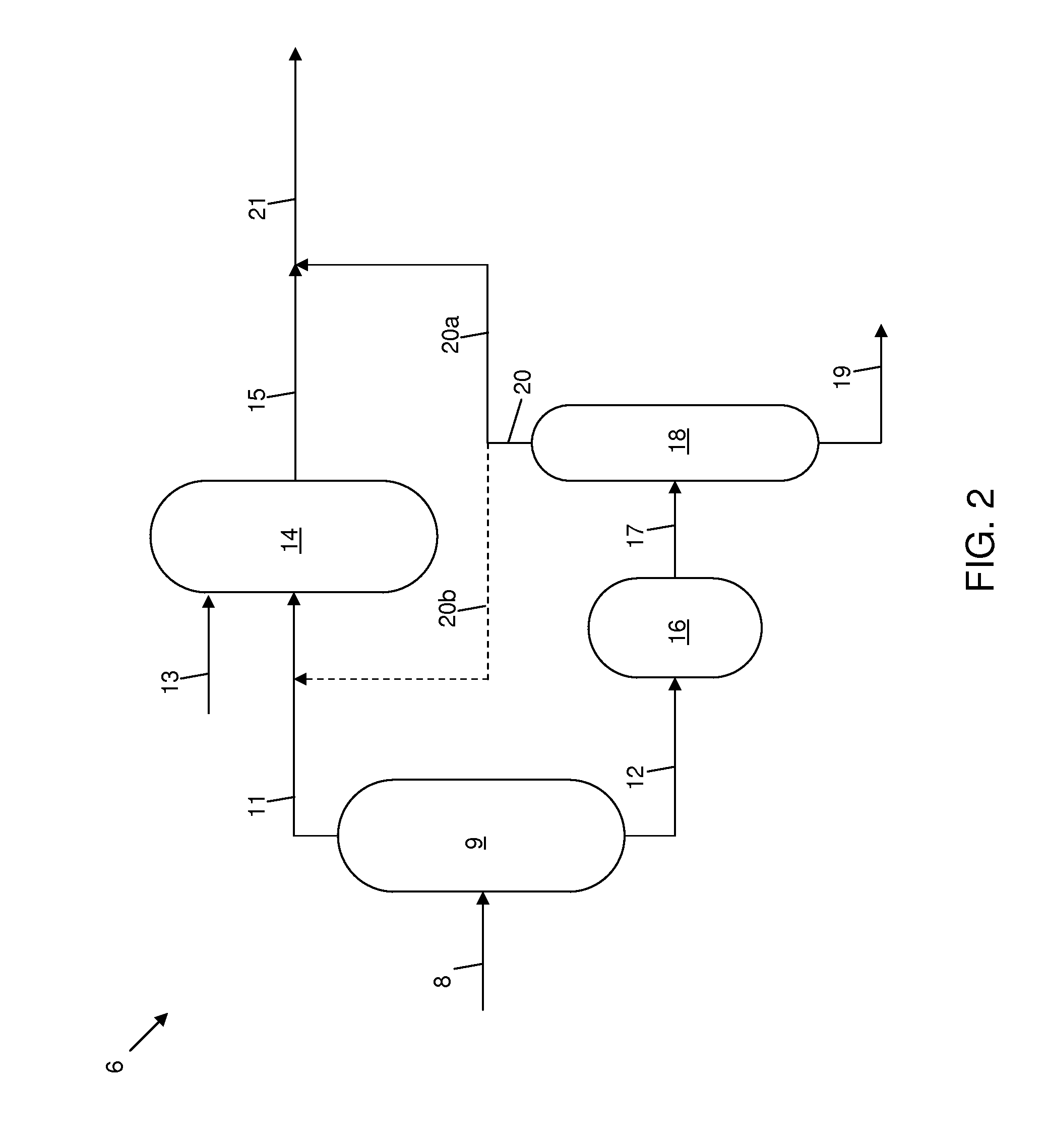Targeted desulfurization process and apparatus integrating oxidative desulfurization and hydrodesulfurization to produce diesel fuel having an ultra-low level of organosulfur compounds
a technology of oxidative desulfurization and hydrodesulfurization, which is applied in the direction of hydrocarbon oil treatment, hydrocarbon oil treatment, refining to eliminate heteroatoms, etc., can solve the problems of affecting the removal of sulfur atoms, difficult to upgrade existing hydrotreating reactors in these facilities, and health and environmental problems, so as to reduce the organosulfur content of hydrocarbon fuels, reduce the volume of the original feedstream, and reduce the cost of hydro
- Summary
- Abstract
- Description
- Claims
- Application Information
AI Technical Summary
Benefits of technology
Problems solved by technology
Method used
Image
Examples
example
[0066]A gas oil was fractionated in an atmospheric distillation column to split the gas oil into two fractions: A light gas oil fraction (LGO) that boils at 340° C. and less with 92.6 W % yield and a heavy gas oil fraction (HGO) that boils at 340° C. and higher with 7.4 W % yield were obtained. The LGO boiling 340° C. or less was desulfurized, the properties of which are given in Table 4.
[0067]
TABLE 4SR GasOil340° C. −340° C. +PropertyUnitValueValueValueYieldW %10092.67.4SulfurW %0.720.6251.9Densityg / cc0.820.8140.885 5%° C.13815033210%° C.16617333830%° C.21821734750%° C.25324435570%° C.28227236390%° C.31731337995%° C.360324389
[0068]The LGO fraction was subjected to hydrodesulfurization in a hydrotreating vessel using an alumina catalyst promoted with cobalt and molybdenum metals at 30 Kg / cm2 hydrogen partial pressure at the reactor outlet, weighted average bed temperature of 335° C., liquid hourly space velocity of 1.0 h−1 and a hydrogen feed rate of 300 L / L. The sulfur content of t...
PUM
| Property | Measurement | Unit |
|---|---|---|
| temperature cut point | aaaaa | aaaaa |
| temperature cut point | aaaaa | aaaaa |
| boiling points | aaaaa | aaaaa |
Abstract
Description
Claims
Application Information
 Login to View More
Login to View More - R&D
- Intellectual Property
- Life Sciences
- Materials
- Tech Scout
- Unparalleled Data Quality
- Higher Quality Content
- 60% Fewer Hallucinations
Browse by: Latest US Patents, China's latest patents, Technical Efficacy Thesaurus, Application Domain, Technology Topic, Popular Technical Reports.
© 2025 PatSnap. All rights reserved.Legal|Privacy policy|Modern Slavery Act Transparency Statement|Sitemap|About US| Contact US: help@patsnap.com



